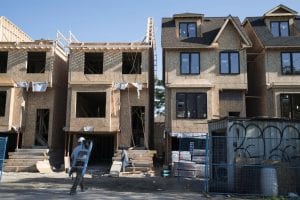Housing prices and the demand for real estate need to synchronize in a thriving real estate market
American playwright Sam Shepard was so right when he said, “Everyone wants a piece of land. It’s the only sure investment. It can never depreciate like a car or washing machine. Land will only double its value in ten years.”
Although people, in general, are aware of this, not many are consciously focused on land in a consistent manner. Most people who are inclined to buy a house, resort to the traditional approach of hiring a realtor, attending open houses and negotiating a deal with the seller. Not many understand that real estate auctions open up opportunities to grab good property in unbelievably great deals.
Anyone who has bought a house from an auction, knows that the main advantage of this process is the potential for saving. Real estate sellers want to get rid of such properties as soon as possible because while they remain unsold, they do not generate mortgage payments. They are high maintenance in the form of upkeep and marketing. Therefore, for them, time is of the essence.
However, Pam McKissick, CEO of a real estate auction firm, says that auctions “put the seller completely in control of the sale.” She says. “You get to pick the date your property will be sold, versus agents bringing you a mythical buyer in the traditional real estate market. You get to decide when your property closes, and the auction process forces buyers to compete for your home. The traditional method leaves you waiting and hoping for an offer.”
In the US, the housing market appears to be doing well, with high demand coupled with growing wages and employment and low mortgage rates. However, as one goes behind the figures, reality changes. For most of potential US home buyers, the homes available are too pricey and beyond their reach. Svenja Gudell, Chief Economist of Zillow, the online real estate database company, said, “It sets up a situation in which the housing market looks largely healthy from a 50,000-foot view, but on the ground, the situation is much different, especially for younger, first-time buyers and/or buyers of more modest means.”
The increased demand and relatively low supply of homes for sale appear to be a lucrative situation for homebuilders. However, they are not building enough cheap houses as buyers demand. Builders says they would like to build more affordable housing, but are prevented from doing so by the cost of land, labor, materials and regulatory compliances, which, together make affordable housing an unreachable goal. Added to this, younger homebuyers seek housing close to urban areas, not fifty miles or so out of cities or in the exurbs, where building costs are less. Gudell says, in theory, buying conditions are great. But, missing from the equation are homes actually available at a price that is considered reasonable by the majority of buyers.
Nevertheless, as populations continue to grow across cities, there will be migration of cities into the exurbs in years to come. According to forecasts, by 2025, the U.S. exurban population could outstrip the urban center population. US Census Bureau data indicates that six million Americans moved out of city centers in the past decade.
Thus, the US still is mostly a suburban nation, racially and ethnically diverse, with its 50 largest metropolitan areas accounting for 79% of its population. In the top 50 metropolitan areas, during 2000-2015, suburban areas accounted for 91% of population growth and 84% of household growth. Fifty of the largest US metro area have five definite types of suburbs – “Established High-End,” “Stable Middle-Income,” “Economically Challenged,” “Greenfield Lifestyle,” and “Greenfield Value.”
According to Freddie Mac’s September Outlook report, new homes are forecast to be a “primary driver of sales” in 2018, with 1.33 million housing sales predicted, up from 1.22 million of 2017. Total home sales are expected to increase about 2% in 2018, compared to 2017, while home prices are forecast to increase 4.9% in 2018, lower than the 6.3% growth of 2017 so far. The low mortgage rates of 2016 have gone up as well, leading to prediction of a fall in refinancing to 25% of mortgage activity in 2018. Chief Economist of Freddie Mac, Sean Becketti, says, “The economic environment remains favorable for housing and mortgage markets.”
The type of demand of housing and the type of supply of housing in the US are out of sync, yet home prices are not expected to drop as there are yet buyers willing to spend the kind of money demanded. However, as McKissick says, “real estate meets reality” at an auction, for when buyers at the auction stop bidding around the same number, that would be probably be the true value of the house, although the seller believes it to be a more inflated number. After all, a home will only be worth what someone is willing to pay for it.
In this situation, more people will resort to renting places rather than buying. As a result, rents will soar and remain high as demand for rental properties rise. This will leave more Americans with less disposable income to spend on other things.
Still, people will always reach out for the American dream of owning one’s house, and building the nest to suit their needs. The 32nd US President, Franklin D. Roosevelt, once said, “Real estate cannot be lost or stolen nor can it be carried away. Purchased with common sense, paid for in full, and managed with reasonable care, it is about the safest investment in the world.”
If you would like to contribute an article or contact our contributors, you can get in touch here

